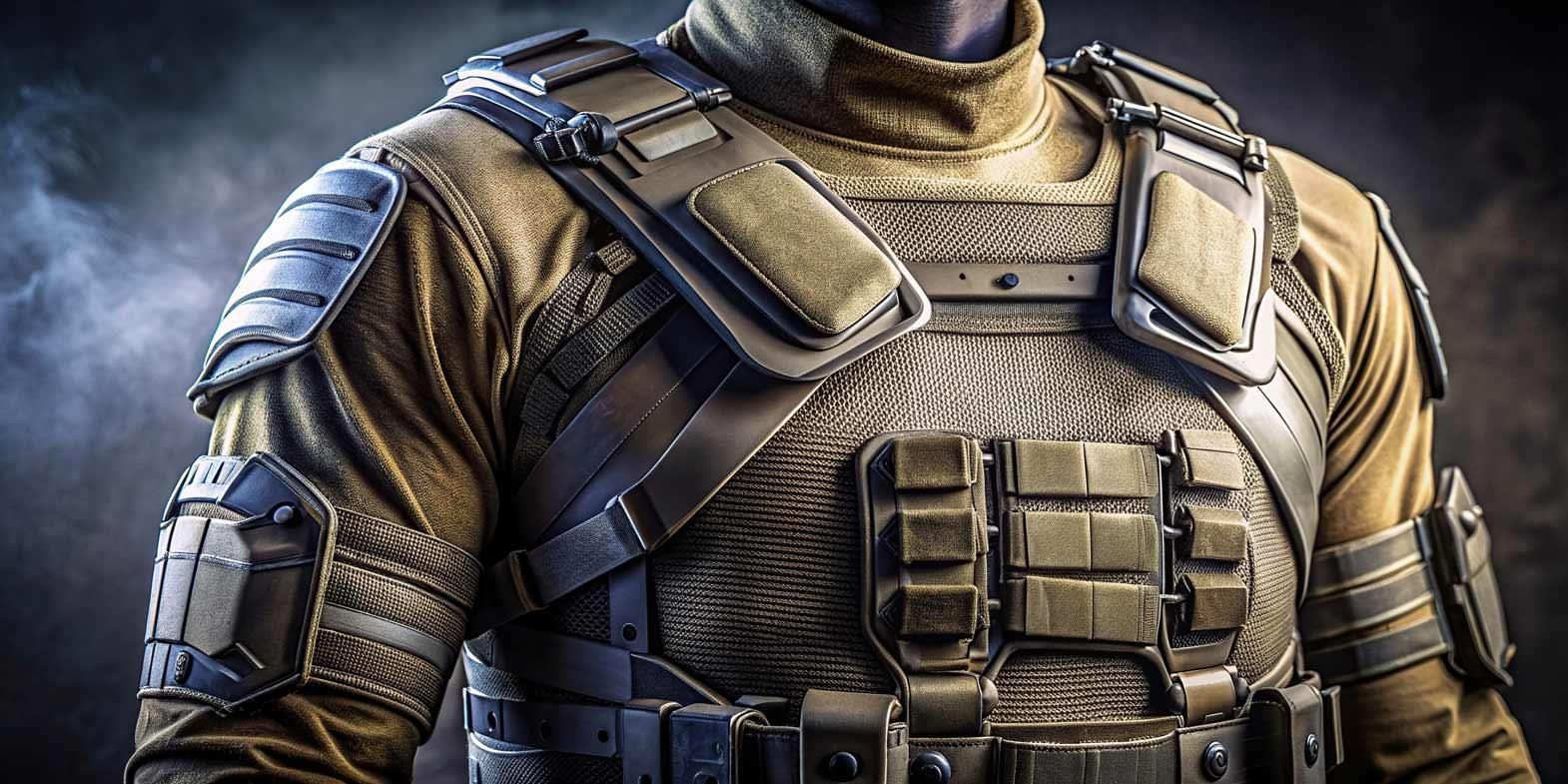According to a report, Making the Soldier Decisive on Future Battlefields, "Soldier weapons and gear are designed to be technologically advanced, but often do not take the human dimension into account. As a result, equipment designs do not adequately include the complexities of individual soldier tasks and human interactions within teams."
Moreover, the difficulties that soldiers stumble upon are not limited to battlefields. In today's chaotic world, defense forces are required for all sorts of emergency situations. Providing up-to-date technology in warfare machinery is not enough, and the focus is now moving to armor worn by soldiers.
A few years ago, the options for lightweight yet sturdy body armors were limited, but the scenario is fast changing, and constant innovations have given way to armors that are light enough to make the wearer comfortable, provide flexibility in movement, and stay sufficiently strong to stop incoming firing. Currently, para-aramid synthetic fibers, ultra-high-molecular-weight polyethylene, etc. are combined with other special textiles like waterproof fabric and heat-resistant fabric to produce lightweight armors. Generally, these fibers are manufactured into different fabric structures before being assembled layer by layer to form personal protection panels.
Don't take it lightly
The world has been a bystander to several wars, and if nothing else, these wars have given innumerable survival ideas to nations and warriors. We have long since moved from the plate armors which were made of iron or steel plates and entirely encased the wearer to avant-garde lightweight armor suits. Even though hard body armor has its advantages, developed nations are increasingly investing in lightweight armor suits, as easy mobility is among the top priorities of soldiers.
Hard body armor is composed of ballistic steel, ceramic, or similar inflexible materials, whereas lightweight or soft body armor uses more sophisticated materials like Spectra, Kevlar, Twaron, or any other fabric-like ballistic material. Hard armor is often used in combination with lightweight body armor to absorb shots as it is flexible, lighter, and easier to wear. Soldiers need to be more agile than ever and to remain constantly alert to be able to move swiftly. Armor suits that impede easy movements are more of a liability than an asset in warfare. This armor guarantees flexibility too, which permits the wearer to be more mobile and won't hinder an individual from running or aiming a weapon. The goal of lightweight armors is to provide comfort and safety to the wearer. Today, different versions of lightweight body armors are worn by soldiers across the world.
Market for lightweight armour
The global body armour and personal protection market is estimated to grow at a Compound Annual Growth Rate of 4.89 per cent and reach US$ 2.4 billion by 2022. The rising popularity of lightweight body armour can be accessed on the basis of lightweight armour segment sale. It is expected to account for 43.4 per cent of the global body armour and personal protection market, followed by the hard armour segment with a share of 34.1 per cent.
The exuberant market growth for lightweight armour can be owed to predicted rise in the demand from Europe and Asia. These two parts of the world are expected to have shares of 31 per cent and 13 per cent, respectively. The mounting interest of countries like China, India and Russia to enhance their defence has resulted in positive developments for lightweight body armour.
Juggling with technology
Countries like Russia are paying special attention to the body armour of soldiers. The Russian soldier 's new 6B43 model hard body armour has chest and back plates made of titanium and hard carbide boron ceramics. However, according to reports from Defense Review (DR), Russian military armour improvement programmes for the last few months are working on developing nano-armour (nanotech armour or nanotechnology armour) and should stumble upon a final product by the end of 2015.
DSM Dyneema, a manufacturer of ultra high molecular weight polyethylene fibre, has announced that Dyneema will be used as the ballistic protection material of choice and key solution for enhanced lightweight armour for the Republic of Korea (South Korea)'s Army Multi-purpose Body Armour Programme. The United States of America's army has also chosen armour system that assimilates Dyneema Force Multiplier Technology which offers unmatched protection along with extraordinary weight reduction.
In India, defence pays exclusive attention on weight-critical applications, following which, the world's lightest armour panels that increases mobility and comfort are produced for defence personnel.
Surpassing the average
Most of the ongoing researches are focusing on producing armours that provide maximum protection and are lightweight. DMTC researchers at Victorian Centre for Advanced Materials Manufacturing (VCAMM) and Deakin University are working on finding substitute for materials that are currently used in body armours. The researchers are developing a new material, Polymer Ceramics.
This novel material merges hard ceramic composite with high modulus polymers and nano-technology. The goal of the research is to achieve a cost effective and more functional body armour material. Some researchers are also focusing on meta-materials instead of nanotechnology to develop body armours. These are man-made materials that use geometric structures created from microscopic materials that can steer light, sound and even matter.
Regardless of what school of thought companies follow, the next generation of body armours should be lightweight and offer widespread protection from modern warfare equipment. The body armour industry is paced for growth, with low-density armour suits making a decent jump. The only hindrance in this is the limited choice of fibres that need to support both protective and lightweight features.
References:
1. Nationaldefensemagazine.org
2. Army-technology.com
3. Washingtontimes.com
4. Defensereview.com
5. Innovationintextiles.com
6. Sciencedirect.com








Comments